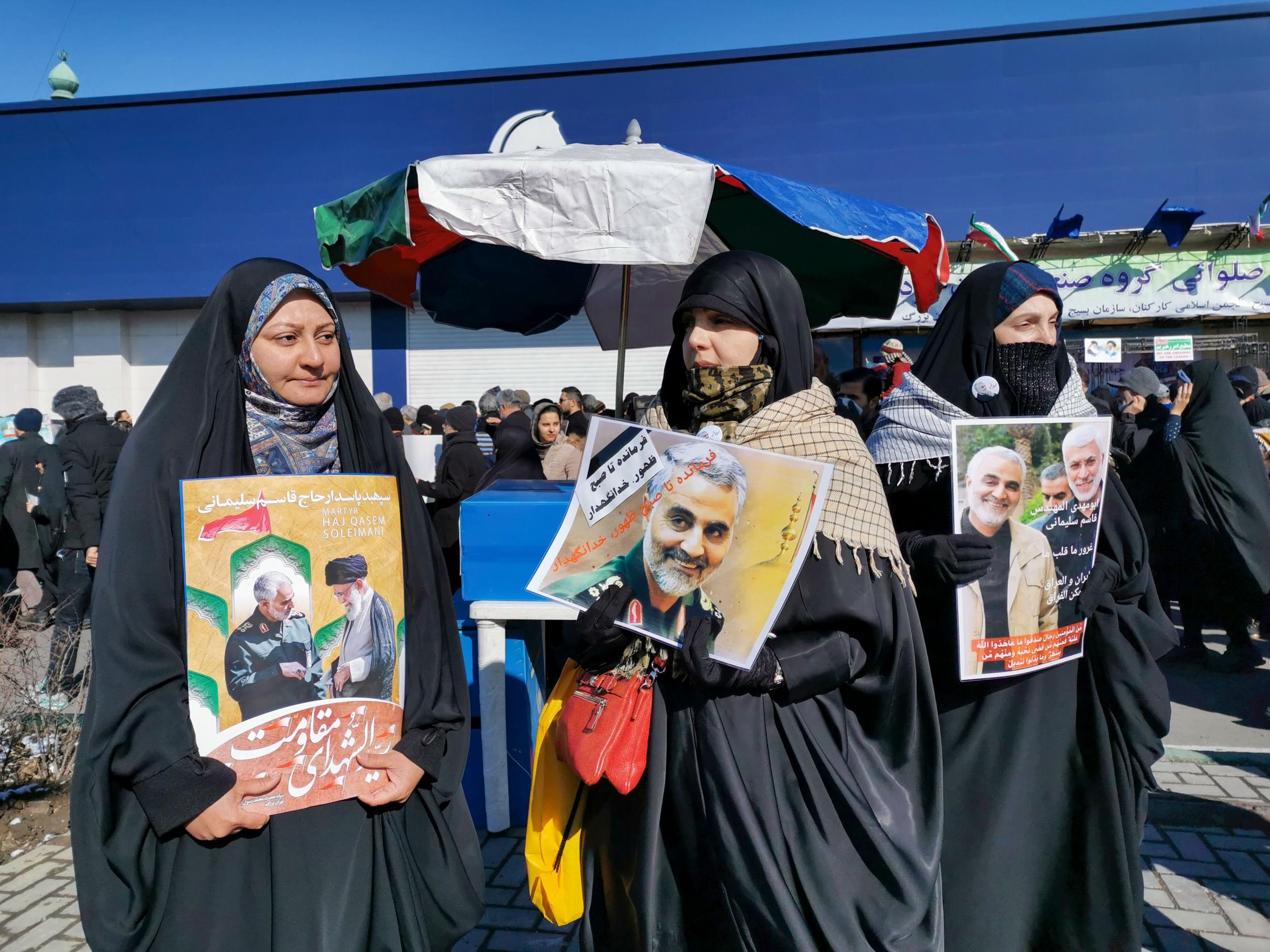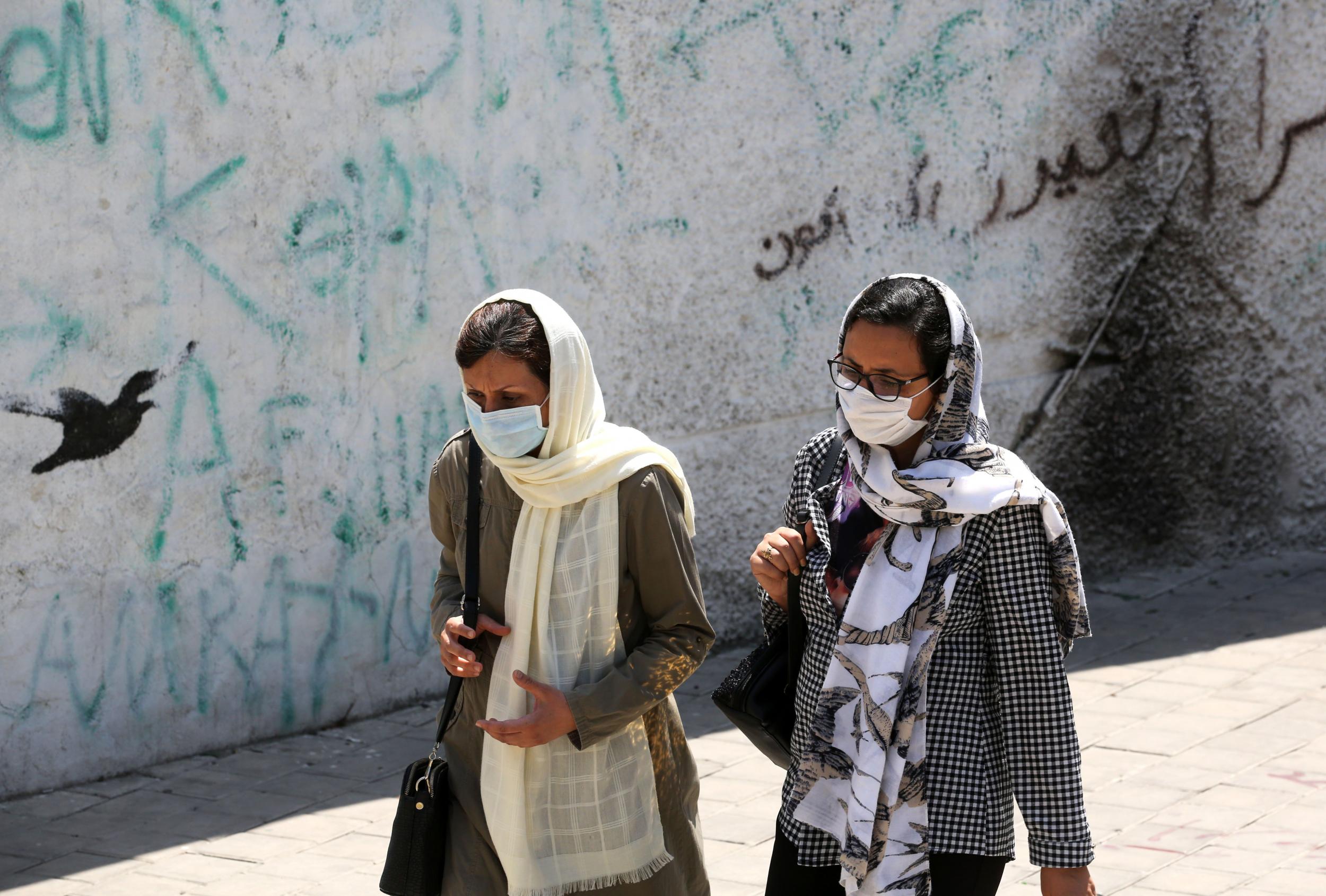Does the Trump administration really care about women’s rights in Iran – or are its motives far more alarming?
US ambassador for women tells Andrew Buncombe that Washington wants to help, but critics say its actions are cynical


To the casual follower of the US state department’s Twitter feed, especially its Farsi language platform, it may appear few things create more anguish to the secretary of state, Mike Pompeo, than the plight of ordinary Iranians.
Almost every day, and on some days several times, a tweet will appear denouncing the Iranian government’s alleged evil and incompetence, and voicing support for its citizens. Many appear aimed at women, including a recent tweet that showed an elaborate historic print of two women dancing during a celebration marking the longest night of summer.
“The regime does not want Iranians to remember the culture before the revolution,” it read.
Recently, as the US has sought to extend the UN arms embargo against the authorities, it has been stepping up its diplomacy against Tehran, and seemingly on behalf of Iran’s women. The Trump administration has even claimed debilitating sanctions it imposed two years ago, described as part of a policy of “Maximum Pressure” and widely criticised by human rights campaigners for adding new suffering to ordinary Iranians, are actually helping the country’s women.
Among those pushing this message in the media has been been Kelley Currie, US ambassador-at-large for women’s rights. She has claimed the US’s primary aim is to put pressure on the Iranian authorities, which represent “the biggest enemy of the Iranian people”.

In an interview with The Independent, Ms Currie repeatedly denounces Iran’s “malign influence”, which she says extends beyond its borders to countries including Iraq, Yemen, Syria and Lebanon.
“I think everybody is pretty familiar with the oppression and persecution that women and girls suffer in Iran, and the numerous violations of their human rights under the theocratic rule,” she says.
“We know that women have not only suffered daily indignities and assaults by the religious police and by the authorities, but also that when they do try to speak out, or try to exercise their rights, whether it’s by taking off the veil, or trying to do other things, that they suffered grievously. They’re killed.”
Some context. In the spring of 2018, when Donald Trump unilaterally withdrew the US from the multi-nation Iran nuclear deal that had sought to control and monitor Iran’s nuclear weapons ambitions in exchange for a loosening of international sanctions, the US said it would reimpose sanctions, pressure other countries to follow its example, and launch a pressure campaign against Tehran.
In doing so, the US further embedded itself on the side of Saudi Arabia in its regional power struggle against Iran, and simultaneously isolated itself from the international community, which had insisted the agreement was working.
Saudi Arabia’s bombing of Iranian-linked Houthi rebels in Yemen, an operation backed by the US and UK and which has caused a massive humanitarian disaster, is one of the front lines in this conflict.

The aim of the Trump administration was very clear – namely to bring down the Iranian government. “The mission set for our team is clear,” said Mike Pompeo. The administration would pursue a “diplomatic and economic pressure campaign” to support the “shoots of liberty growing through Iran’s rocky soil”.
Reuters said the campaign represented an “offensive of speeches and online communications meant to foment unrest and help pressure Iran to end its nuclear programme and its support of militant groups”.
Critics of the US’s actions say it is cynically using the issue of women’s rights to attack Tehran.
“This is part of a coordinated campaign to portray Iran as the devil incarnate,” says activist Medea Benjamin, co-founder of Code Pink, which campaigns for peace and women’s rights.
“Certainly, the Iranian government has plenty of problems, and women deserve far more rights in Iran than they have. But the US selectively picks Iran ... because the neocons have long had their sights on Iran.”
She says as Trump has intensified his campaign against Iran, the opportunity for activism by women there has diminished.
“The biggest problem facing women in Iran, by far, is not the piece of cloth they have to put on their head,” she adds. “It’s the sanctions that are making their lives so difficult.”
Iran has a long and complicated history. A 1953 coup organised by the US and UK ousted its democratically elected prime minister and replaced him with a monarch, the west-friendly shah, Mohammad Reza Pahlavi. In 1979, the shah was overthrown in a revolution that created an Islamic republic, headed by a religious leader. That year, more than 50 US diplomats were detained for more than 400 days. The relationship between the two countries has largely been marked by antagonism and conflict ever since.
Sussan Tahmasebi, a DC-based activist and founder of the group Femena, seeks to view current events with the insight of history.
She says the modest rights of women enjoyed under the rule of shah, which were removed in the revolution, have not been recovered. At the same time, women are central to much of Iranian society.
“We advocate for equality, for women’s rights, and there are a lot of discriminations embedded in the law against women,” she says. “But since the second decade after the revolution, women inside the country have consistently and persistently advocated for legal changes.”
She adds: “Women are socially active, they’re a big part of society. You see women in pretty much all sectors of life. Women are present in almost all professions – they are MPs, though their numbers are low, much lower than they should be. You have politicians, women governors, women ambassadors. [There are] women doctors, engineers, teachers, university professors, taxi drivers, and even truck drivers.”
Tahmasebi says Pompeo is correct when he says the “maximum pressure” campaign and sanctions have hurt Iran’s economy, making it less equipped to respond to crises such as the coronavirus pandemic, which had most impact on the already marginalised, many of them women. The nation of 80 million people has had more than 360,000 Covid infections and around 20,000 deaths.
Does she believe the US’s diplomacy about women’s rights is genuine?
“Even if the concern is genuine, the tensions between the two countries make the discussion on women’s rights problematic,” she says.
“Especially when that level of discussion and concern is missing from the discourse of many US government officials when it comes to the rest of the MENA [Middle East and North Africa] region.”
In the interview, Currie, the US ambassador, insists the administration has also lobbied Saudi Arabia over its record on women’s rights, which are notoriously poor.
“The Saudis and the UAE have both made recent changes, and nobody’s going to say those places are at US or western European standards, but they are moving in that direction in terms of having changed laws recently,” she says.
Does she think the condition of women is better in Saudi Arabia than Iran? “I’m not going to get into these comparisons,” she says.
Why not. Why just focus on Iran? She replies: “That was the purpose of the phone call today.”
What does the ambassador say to those who suggest the US is raising the issue of women’s rights for broader strategic ambitions in the Middle East? “I would reject the premise of that.”
Asked about the impact of sanctions, the damage to the economy and the fact many women in Iran today struggle to buy items such as sanitary products, she says: “Iran has the resources to care for its population. Instead, they choose to use those resources to export terror and chaos in their region. So US sanctions are fully justified because Iran is a threat to international peace and security.”
Join our commenting forum
Join thought-provoking conversations, follow other Independent readers and see their replies
Comments